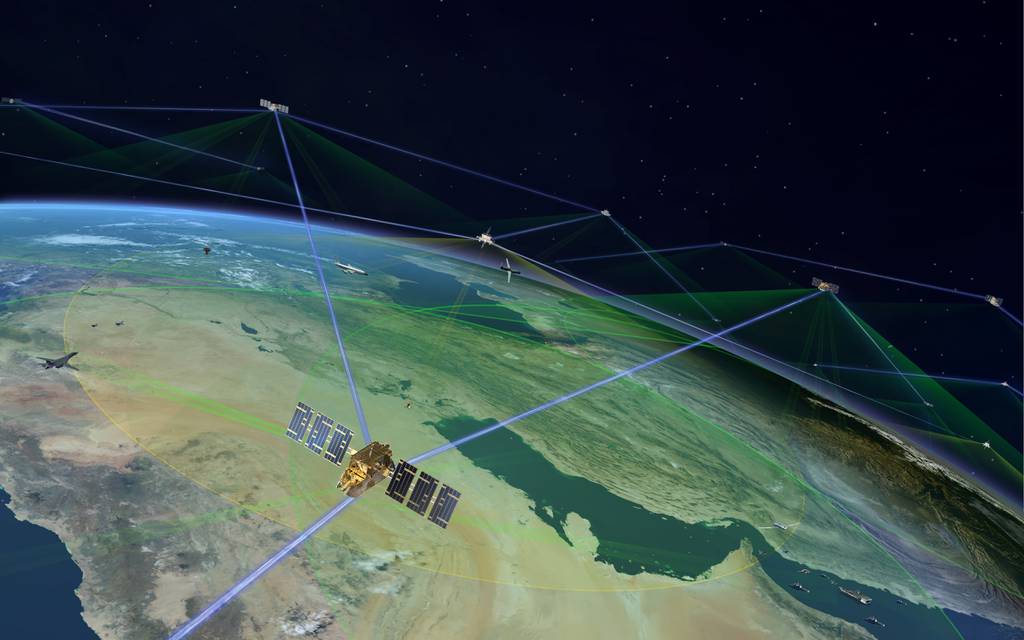- Joined
- 27 December 2005
- Messages
- 17,748
- Reaction score
- 26,410
I'm curious if one can arbitrarily change the encryption key/generate encryption key on their own for this datalink system without requiring permission from US.
One thing that I don't know (and if I did know of course I could not say; thus I am free to speculate) is how cryptographically secure the hopping sequence is (note that link-16 uses different encryption for hopping (TSEC) and message content (MSEC)). The people who designed Link-16 were plenty smart, but I'm not sure how well they were able to predict the 2020 state of the art in fast cracking (a particular thing which is my speculation regarding the type of generator used for Link-16's pseudorandom hopping sequence).
Obviously anybody with Link-16 hardware and autonomous keymat generation capability can mount a chosen plaintext attack on the hopping sequence. If the sequence is crackable in near realtime, then it is also exploitable for both ELINT and jamming purposes. The frequency dwell time is about 13 usec (more precisely, the hop rate is 77 kHz - I'm too lazy to go back and look up the guard times) so it is straightforward to create a frequency synthesizer that can match and jam or track it.
You mean allied key management? It's totally up to them. If they wish to share their keys with everyone else there are
formal/encrypted key sharing mechanisms for doing so.
They are free to share network keys for lower privilege networks while reserving higher privilege keys for their
own internal networks. It's how Link-16 was (kinda) designed; segregation by key.

1) In what sense is Link-16 "not particularly jam resistant, non LPI, not LPD". It is described as "a TDMA-based secure, jam-resistant, high-speed digital data link" in every document I can find on it. So what has changed to make it easy to find and jammable?One thing that I don't know (and if I did know of course I could not say; thus I am free to speculate) is how cryptographically secure the hopping sequence is (note that link-16 uses different encryption for hopping (TSEC) and message content (MSEC)). The people who designed Link-16 were plenty smart, but I'm not sure how well they were able to predict the 2020 state of the art in fast cracking (a particular thing which is my speculation regarding the type of generator used for Link-16's pseudorandom hopping sequence).
Obviously anybody with Link-16 hardware and autonomous keymat generation capability can mount a chosen plaintext attack on the hopping sequence. If the sequence is crackable in near realtime, then it is also exploitable for both ELINT and jamming purposes. The frequency dwell time is about 13 usec (more precisely, the hop rate is 77 kHz - I'm too lazy to go back and look up the guard times) so it is straightforward to create a frequency synthesizer that can match and jam or track it.
For a datalink that's not particularly jam resistant, non LPI, not LPD, the vulnerability of a pseudo-random hopping sequence is about
the least of the major concerns.
Aside from as a weapons datalink, Link-16 is pretty much moribund in the high-end threat environment. For weapons, it doesn't really
matter if you crack the encryption in near-realtime since you've been hit and destroyed in hard realtime.
Thanks for the really detailed response. A couple of follow ups if you don't mind.
1. Are there a good set of recommendations were I can learn more about the topics being discussed here: mmWave, AESA, phased array antennas, LPI/LPD techniques and/or IFDL/MADL specifically?
1a. One thing I don't quite understand is the difference between AESA - which the F-35 definitely has (APG-81)- and digital beamforming, which DARPA says they want (MIDAS) and which therefore we don't have fielded.




All Link 16 systems were required to upgrade to stronger Cryptographic protection (look up Crypto Mod Mandate). All Link 16 systems were required to meet this standard by 01JAN22, those who don't will be left out of new networks.One thing that I don't know (and if I did know of course I could not say; thus I am free to speculate) is how cryptographically secure the hopping sequence is (note that link-16 uses different encryption for hopping (TSEC) and message content (MSEC)). The people who designed Link-16 were plenty smart, but I'm not sure how well they were able to predict the 2020 state of the art in fast cracking (a particular thing which is my speculation regarding the type of generator used for Link-16's pseudorandom hopping sequence).
Obviously anybody with Link-16 hardware and autonomous keymat generation capability can mount a chosen plaintext attack on the hopping sequence. If the sequence is crackable in near realtime, then it is also exploitable for both ELINT and jamming purposes. The frequency dwell time is about 13 usec (more precisely, the hop rate is 77 kHz - I'm too lazy to go back and look up the guard times) so it is straightforward to create a frequency synthesizer that can match and jam or track it.
F-35 uses MADL....highly directional datalink used to exchange data between F-35s. F-22 uses IFDL which serves the same purpose as MADL for F-35. When you couple low power with directionality it translates to LPI/LPD.I guess I'm not so much concerned about the cryptography as I am about the LPI/LPD. Your question does make me interested in what we have to replace Link 16 then? The F-22 and F-35 have their own data links, but no one can really tell me how they work (ie, *why* are they LPI/LPD)
Yes, encryption is being upgraded. Legacy keys will no longer be issued except for limited training uses.
- Its not designed to be hard to detect (non-LPI, not LPD) so its not really compatible with stealth aircraft use.
- Its original encryption / cryptographic standards were created in the 1980s. There's pretty much no 1980s era usable crypto algorithm that can't be cracked in real time by modern computing hardware.
- There have been references to Link 16 Cryptographic Modernization, so I assume the encryption has been or will be beefed up somewhat, but its potentially still technically limited by its age and basic technology, and any legacy equipment will presumably need upgrading to be more secure.


Sure, it's an issue. But that's why it has 2 separate crypto keys. One for the frequency hopping and one for the actual message.One thing that I don't know (and if I did know of course I could not say; thus I am free to speculate) is how cryptographically secure the hopping sequence is (note that link-16 uses different encryption for hopping (TSEC) and message content (MSEC)). The people who designed Link-16 were plenty smart, but I'm not sure how well they were able to predict the 2020 state of the art in fast cracking (a particular thing which is my speculation regarding the type of generator used for Link-16's pseudorandom hopping sequence).
Obviously anybody with Link-16 hardware and autonomous keymat generation capability can mount a chosen plaintext attack on the hopping sequence. If the sequence is crackable in near realtime, then it is also exploitable for both ELINT and jamming purposes. The frequency dwell time is about 13 usec (more precisely, the hop rate is 77 kHz - I'm too lazy to go back and look up the guard times) so it is straightforward to create a frequency synthesizer that can match and jam or track it.

